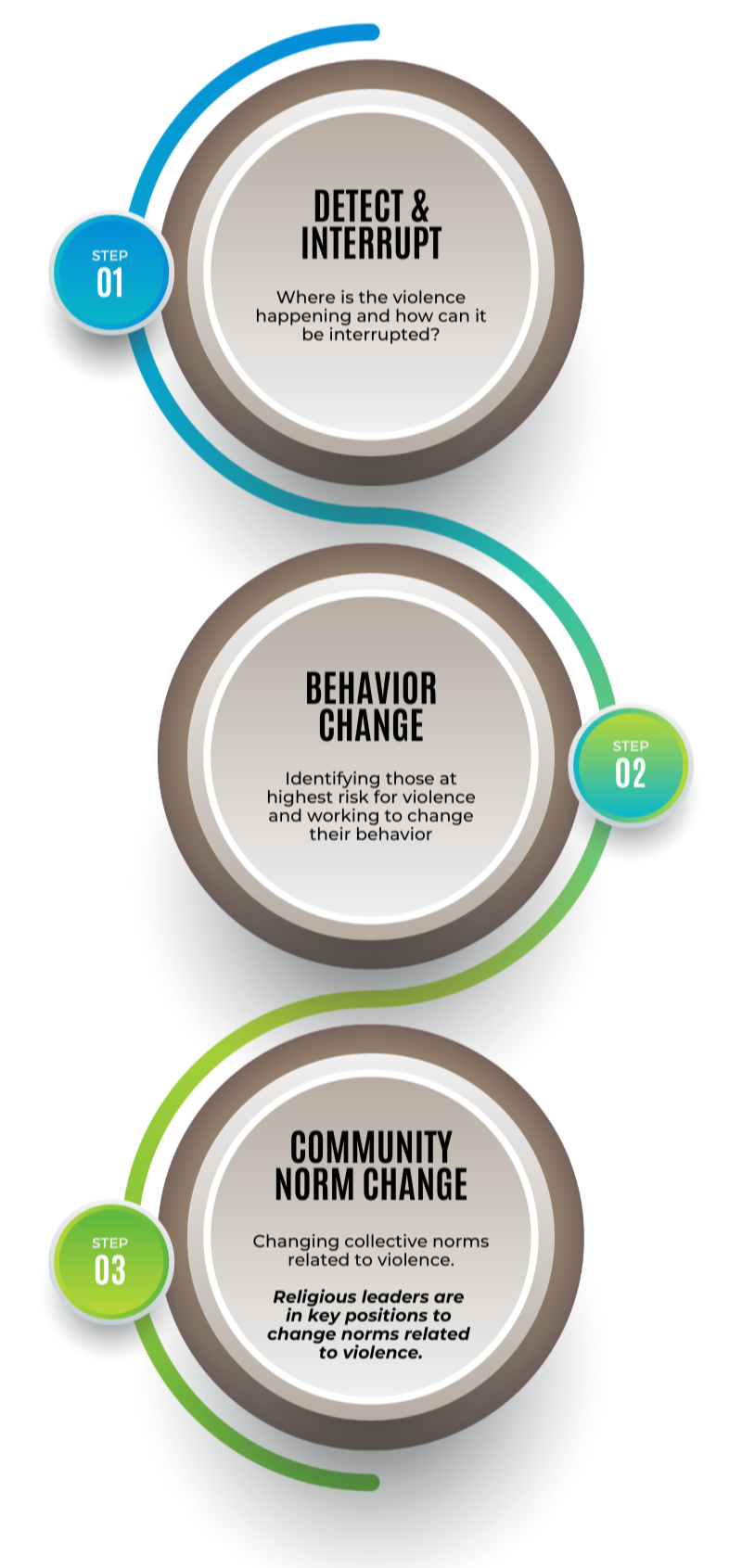URI believes that:
- Violence is a behavior that spreads in a contagious manner.
- Violence is a behavior that can be prevented.
Understanding violence in this manner opens up new ways of addressing violence, including through what has become known as the health approach to violence prevention.
This approach can be particularly effective in preventing violence at the local level. Religious, spiritual, indigenous, and non-faith leaders and actors have an important role to play in interrupting and stopping the spread of violence, and in changing norms related to violence.
The health approach to violence prevention is based on the same methods the World Health Organization uses to interrupt and stop the spread of contagious diseases:
- detect and interrupt the spread,
- change the behaviors of the highest risk,
- change the way violence is viewed in the community.
11 October Webinar - RETHINKING HOW WE VIEW VIOLENCE
To better understand the health approach to violence prevention, please watch the recording below of the October 11, 2023, webinar on The Health Approach to Violence Prevention or view this presentation from the same webinar.
More Information about the Health Approach to Violence Prevention
The health approach treats violence like a contagious disease or behavior that can be both interrupted and prevented.
There are three key components of this approach: (Please see below the graphic for a more detailed document from Gary Slutkin.)

For more information on the health approach to violence prevention, please consult the references below.
URI Website
External website from our Partner organizations
- From Network of Religious and Traditional Peacemakers Preventing and Addressing Violent Extremism through Community Resilience
- From the United Nations Plan of Action for Religious Leaders and Actors to Prevent Incitement to Violence that Could Lead to Atrocity Crimes